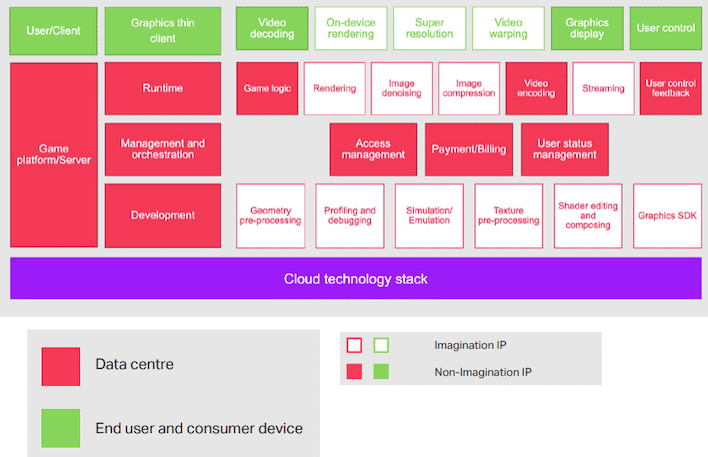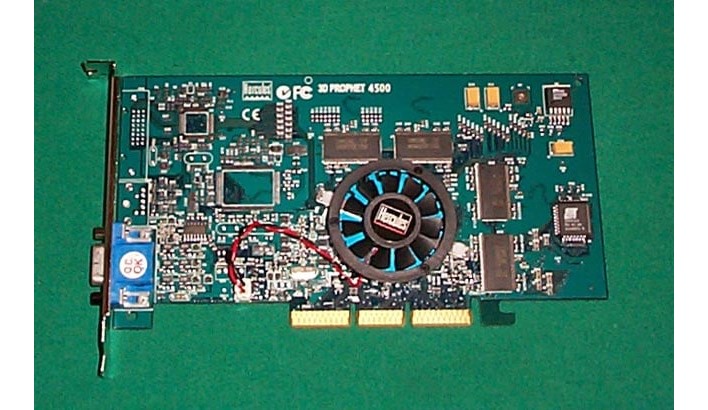Imagination Technologies To Make A Triumphant PC Graphics Return?

Those parts are based on ImgTec's B-series graphics architecture that was launched in 2020. That architecture is a critical reference point for the company's latest GPU IP, known as "DXD". Imagination says that its DXD architecture is "2.25x" as fast as its BXT design, but that's not the most exciting part. The most exciting part about DXD is that it will be the first ImgTec GPU in a very long time to support a recent version of DirectX.

Before we get too excited and start talking about the return of PowerVR to desktops, we should be clear up front (just as ImgTec is) that the chip only supports DirectX 11 feature level 11_0. That gives it feature parity with AMD's Terascale 2 and NVIDIA's Fermi architecture. Those were used in the Radeon HD 5000 and GeForce 400 series GPUs, launched in 2009 and 2010. So saying, despite that DXD apparently supports ray-tracing in some form, you probably won't be playing Cyberpunk 2077 on an ImgTec GPU any time soon.

That's probably fine, though, because these parts aren't meant for that anyway. Imagination very heavily emphasizes that these GPUs are meant for cloud gaming operators. The IP is designed to support "multi-core" operation, meaning that when designing your GPU, you could slap down a half-dozen DXD GPU cores on a single chip. Each core can operate as a separate virtual instance to host lightweight games, or they can be combined to work together on a particularly heavy game.

The idea is that you set up a rack full of multi-core DXD GPUs, and then they can be dynamically allocated to cloud gaming customers based on workload. One GPU core might host multiple sessions of a particularly light game, or an entire multi-core GPU could be allocated to a single session. Of course, the details will depend on implementation, because ImgTec doesn't make GPUs—it just designs the core IP.
We like to talk about hardware here—it's in the name, after all. The thing is, a graphics processor is only as good as the software that runs on it. It's easy to assume that we're talking about drivers, but that's because it's been a long time since the idea of a graphics processor with limited API support was even a thing. GPUs from AMD, NVIDIA, and Intel have all had broad support for the latest graphics APIs for a long time, so you can generally assume that any game or application will "just work" on your video card, at least in some fashion.

Back in the day, that wasn't necessarily the case. As an example, 3dfx released its Voodoo5 5500, limited to DirectX 6 rendering, after the launch of DirectX 7. Likewise, one of its competitors was the PowerVR Kyro II. PowerVR had been around since the early days of PC 3D graphics, but had never really been a major force in the market due to weak software support. Arguably, the Kyro II was the company's best effort in that regard, and it still had compatibility problems with some of the games that it could run at all.

PowerVR retreated from the PC market after the Kyro II, but it didn't vanish. In fact, Imagination Technologies is the company that created PowerVR. It has moved away from that branding and no longer calls its GPU IPs by the PowerVR name, but the company says that the roots of PowerVR's technology live on in DXD; it still makes use of a tile-based deferred rendering paradigm. PowerVR's GPUs were always known for their extremely high power efficiency, and Imagination emphasizes that quality in its materials for the DXD architecture.
Will we see desktop GPUs based on DXD? Almost assuredly. Will they come to the US? Probably not. Because Imagination is owned by a Chinese firm now, that market is the company's focus. How do you get a billion people playing video games that nominally require a relatively-capable 3D graphics processor? Cloud gaming. With an extremely cheap and power-efficient smartphone or tablet, cloud gaming could allow people in China's heartland to get on the video games bandwagon.
According to the press release, a "dual-core" configuration of Imagination's DXD could deliver 5 TFLOPs of FP32 compute and 144 Gtexels/sec of texture fillrate. Those specifications are in the ballpark of the Radeon RX 6500 XT, but we'd reckon that the ImgTec design could punch above its weight, as PowerVR GPUs always did. We reviewed the last PowerVR retail GPU back in 2001 and were impressed with its performance and image quality. It would be pretty cool to get to review that GPU's descendant over 20 years later.

